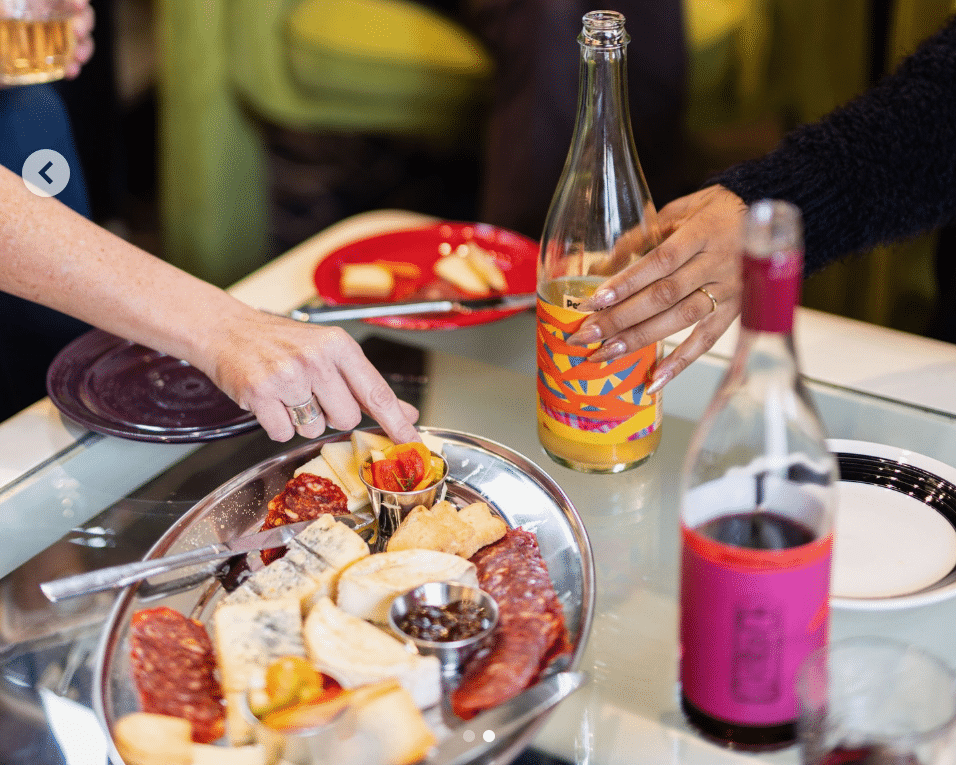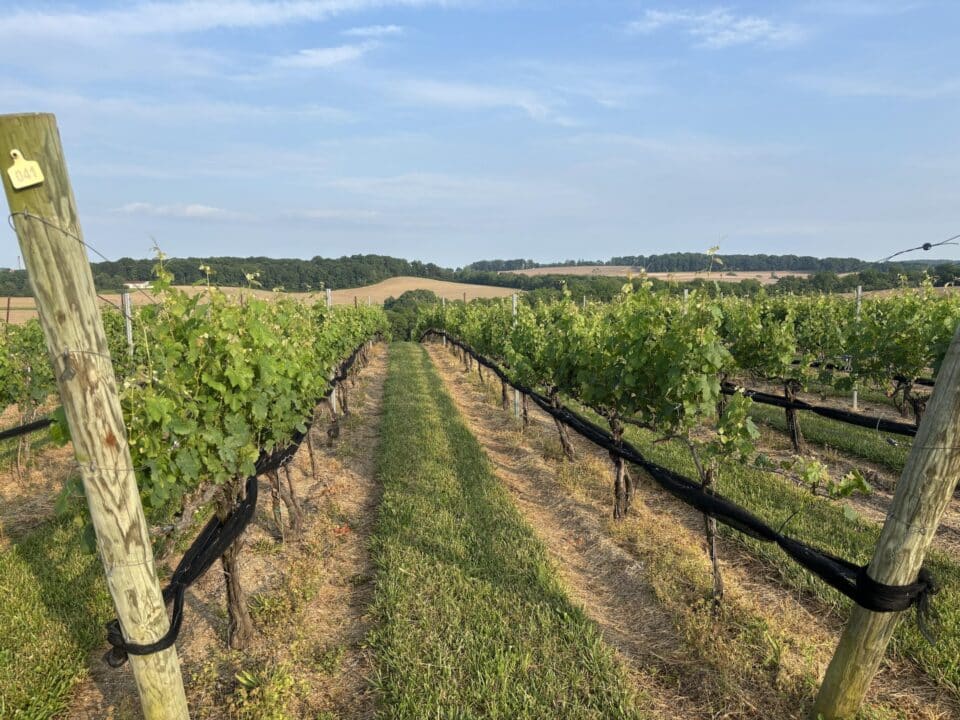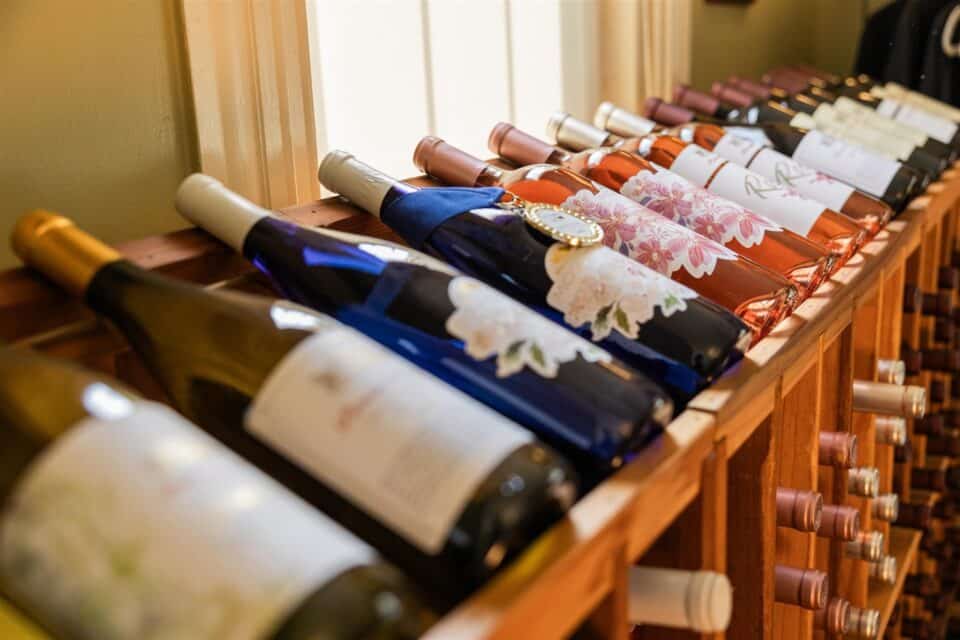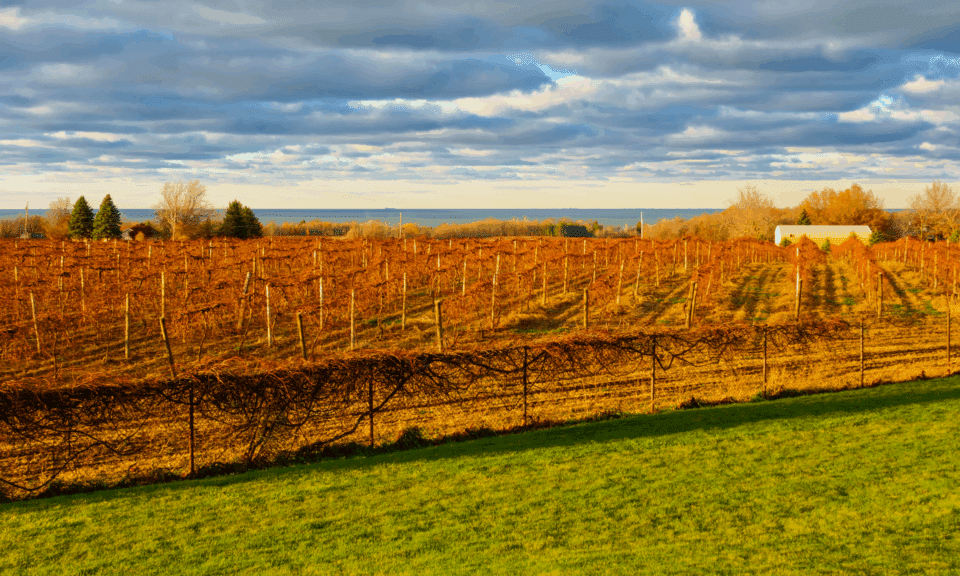As you begin to explore all that Pennsylvania wineries have to offer, you may encounter grapes that are less familiar than the standbys like Pinot Noir or Sauvignon Blanc. We think that’s one of the coolest parts of going on a wine journey: getting to discover grape varietals, wine styles and flavor profiles that you might not find in big-box retailers!
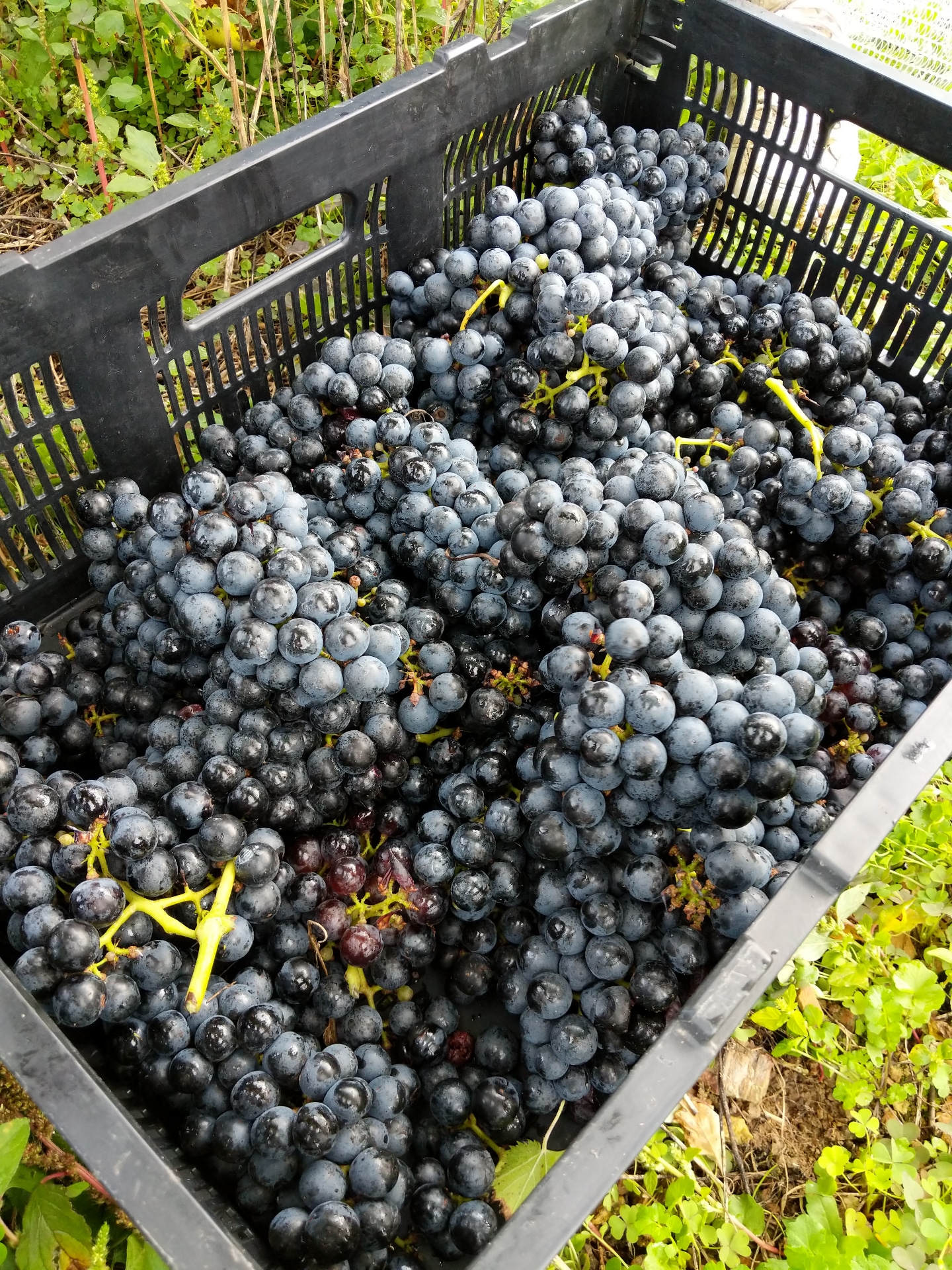
One wine grape that we’ve come across on the lists at a bunch of PA wineries is Chambourcin (pronounced “Sham-burr-sin”). Here are some quick facts about this grape, and the wines it can create:
- A red wine grape, Chambourcin is sometimes compared to Zinfandel, Merlot and Malbec.
- It can be made into a dry, sweet or rosé wine. Some PA wineries use Chambourcin to make sparkling reds or sparkling rosés, as well.
- Typically, as a red wine, it shows a medium body wine with purple and black fruit flavors, like dark cherry, blackberry and plum, with a spicy edge.
- Chambourcin is what’s known as a teinturier. That means the grape’s pulp is pink, and creates pink or red juice when pressed (versus the white pulp in most red wine grapes that produces clear juice).
Sparked by curiosity to learn more about Chambourcin, we reached out to Dan Brown, the owner and winemaker of Deerfoot Vineyards & Winery in Shoemakersville, PA, about 35 miles west of Allentown. During his decade-plus of farming and managing his two-acre vineyard, Brown has grown a variety of grapes — one of which is Chambourcin — and he was excited to share his wealth of knowledge.
First, a little background on Dan Brown and Deerfoot Vineyards:
Brown is a third-generation farmer; his grandparents originally purchased his family’s property in 1947. For its first few decades, they ran it as a dairy farm, then later transitioned to growing produce crops. When it was Brown’s turn to take on the operations of the farm, he considered planting a vineyard because the soils and geography were well-suited, and his wife had recently introduced him to the wide world of wine.
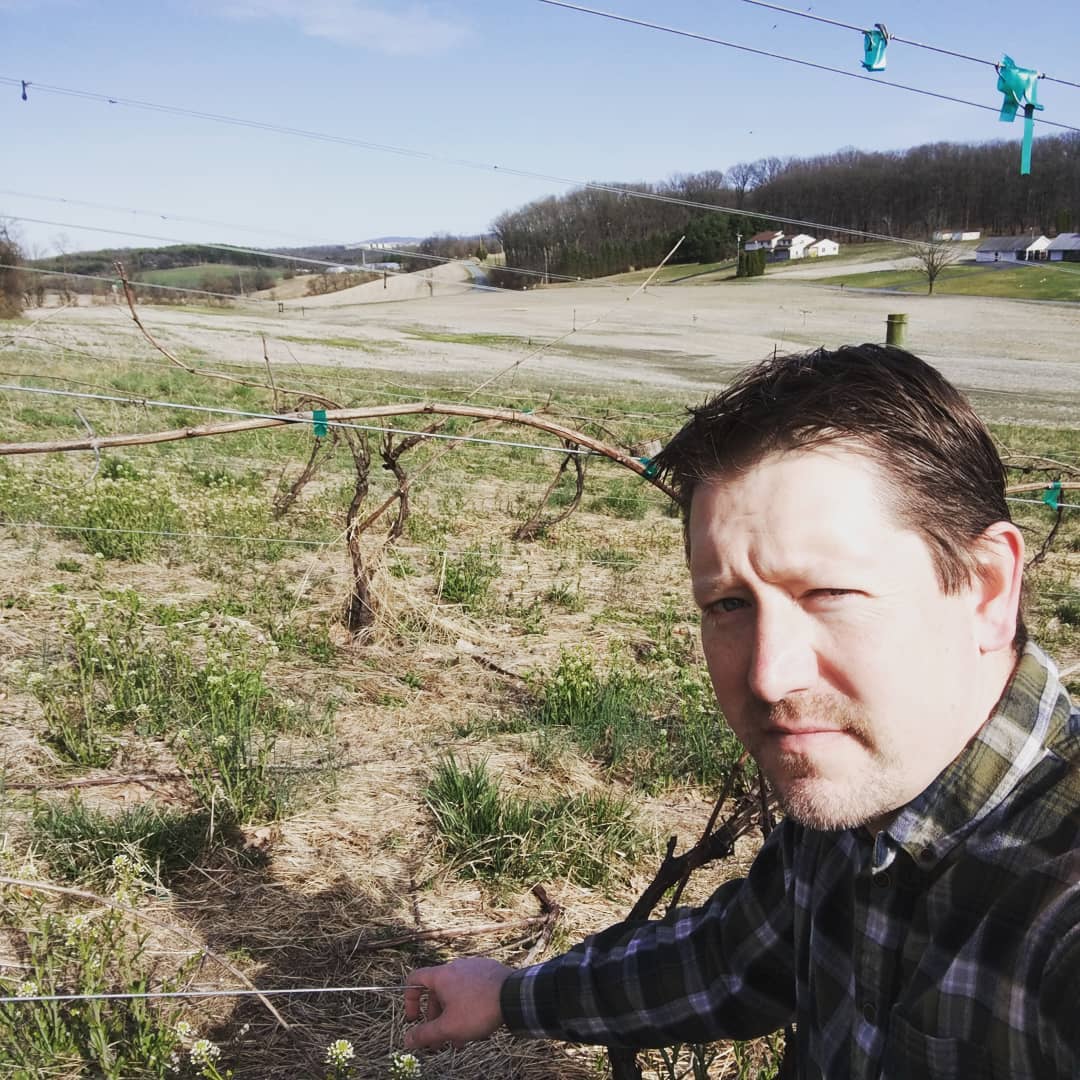
Dan Brown of Deerfoot Vineyards & Winery
In 2010, Brown planted his vineyard, starting with Petit Verdot and Riesling. His original plan was to grow grapes to sell to other vineyards, but after a few years, he decided to make his own wine with the fruit. He earned an associate’s degree in winemaking, and began producing wine under the Deerfoot label and selling it at farmers markets between Philadelphia and Reading, PA.
Now that he’s more established, with a tasting room on site in Shoemakersville and another in Lancaster, he’s planted other grapes in the vineyard as well, including Cabernet Franc and Cayuga White. Brown is always thinking about how to maximize his plantings, which brings us back to Chambourcin.
“I first planted Chambourcin in 2012, because it’s extremely versatile,” he notes. “You can make it into a really nice, dry barrel-aged red wine, or use it to blend with other wines.”
Brown is quick to note that Chambourcin is not a native Pennsylvania grape, but actually a French-American hybrid created in 1963 by a French viticulturist named Joannes Seyve. But it does grow extremely well in the Lehigh Valley AVA (American Viticultural Area), an area with rolling hills, between 600 and 1,200 feet of elevation, and shale-rich soil that, in Brown’s area, also has a limestone base.
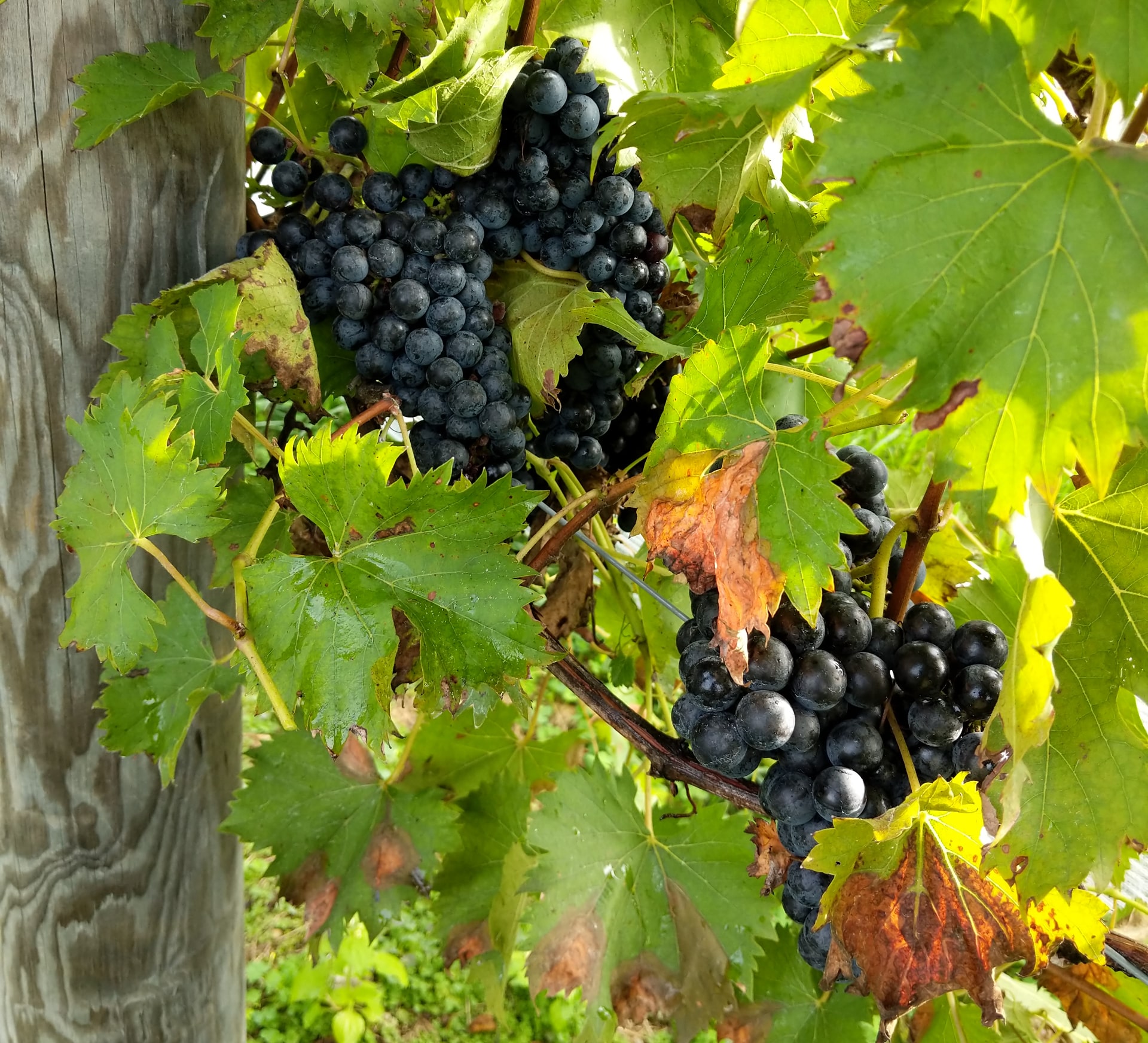
Chambourcin is resistant to fungal diseases, making it well-suited for the humid, precipitation-heavy climate on the East Coast; it’s also robust enough to survive our cold winters. It’s a productive crop, and Brown reports that while some of the European varieties he plants may yield two to three tons per year, Chambourcin can easily yield four to five tons per year.
“I could probably even push it and get it to yield more like seven to eight tons, but then you’d lose quality,” Brown says.
Quality is a top priority for Brown, whose single varietal Chambourcin Red has taken home a number of awards, including a silver medal at the 2021 Finger Lakes International Wine Competition, and a bronze medal at the 2020 PA Farm Show.
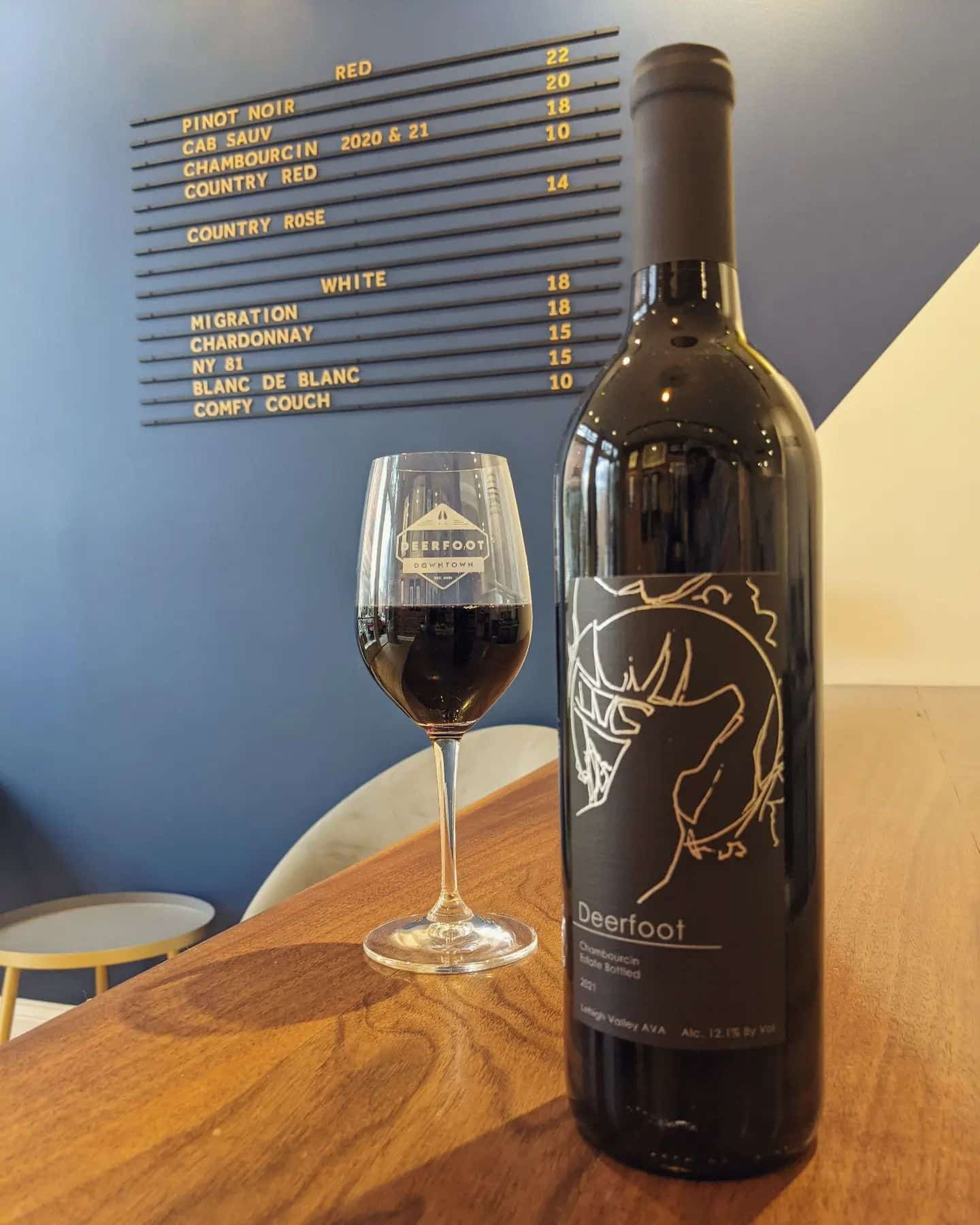
He loves showcasing its rich purple hue and black and purple fruit flavors with the subtle vanilla and smoky tones from barrel aging in a mixture of new and used American oak.
“Our Chambourcin is a show-stopper!” he remarks. “I like giving it to people because they don’t know what to expect.”
Brown also blends Chambourcin into Deerfoot’s fan favorite, Barn Swallow Semi-Sweet red. The skins of Chambourcin grapes are deeply pigmented so it can also be used as a powerful component in wines that need a little more oomph in terms of color, flavor or body. Depending on the year, Brown sometimes blends it into his Six Point Red, which is primarily Cabernet Franc. He’s even used it as the base for some vermouth experiments he’s been toying with.
Chambourcin is a great way to introduce uninitiated or skeptical consumers to how nuanced, powerful and beautiful Pennsylvania wines can be, Brown believes.
“A lot of times people have an expectation about what PA wines are and Chambourcin shatters that because it’s so bold, and so fruity, people want to know more,” he says. “It’s a way to open the door for people to appreciate what it is that we can do here.”
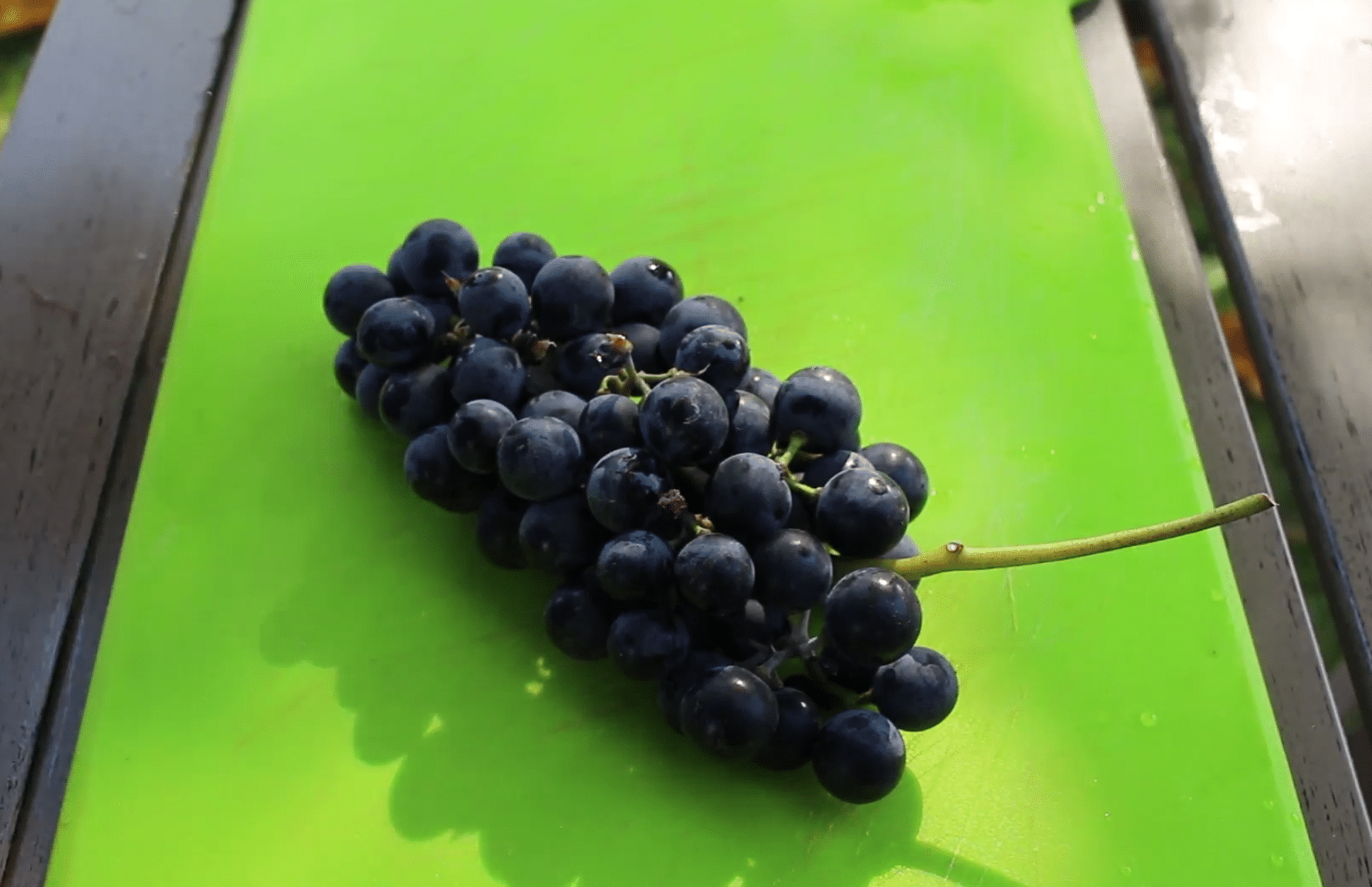
If you’re intrigued about Chambourcin and want to try it for yourself, here are some Pennsylvania wineries, in addition to Deerfoot, to check out: KingView Mead, Cider, and Wine Chambourcin, Folino Estate Chambourcin, Nissley Vineyards Chambourcin, Armstrong Valley Vineyard & Winery Chambourcin, Pinnacle Ridge Winery Chambourcin, Mural City Cellars CSW Rosé and Clover Hill Vinyeards & Winery Ruby.
The PA Vines & Wines series was created in collaboration with the Pennsylvania Wine Association with Round 8, Act 39 grant funding from the Pennsylvania Liquor Control Board (PLCB).
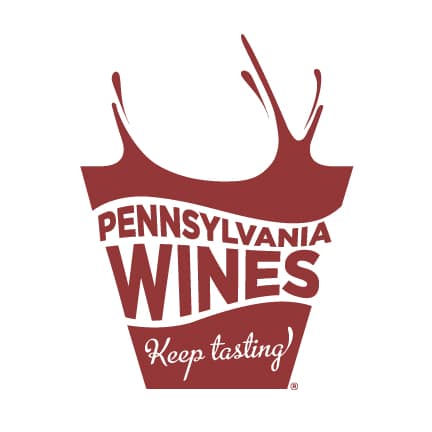
The Pennsylvania Winery Association (PWA) is a trade association that markets and advocates for the limited licensed wineries in Pennsylvania.
- Photos: Deerfoot Winery
- PWA Logo: Pennsylvania Wine Association
